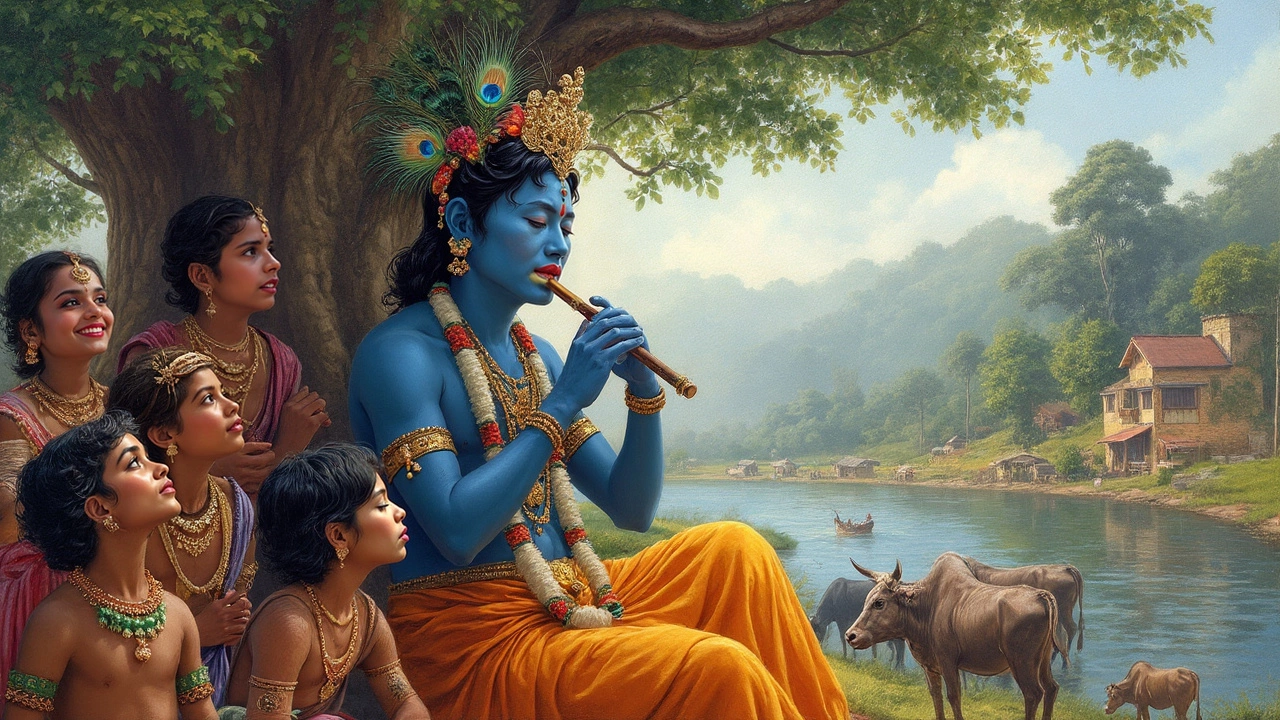Krishna Skin Color – What It Really Means
When you hear the name Krishna, the first image that often pops up is a dark‑blue or blackish figure. But why is his skin color described that way? It’s not a random detail; it comes from ancient stories, symbolism, and how artists have painted him for centuries.
Scriptural Descriptions
From the Bhagavata Purana to the Mahabharata, writers call Krishna "shyam" or "gopal‑shyam," which translates to dark‑blue or black. In Sanskrit, "shyam" can mean the color of a rain‑cloud or the deep hue of a lotus pond at dusk. These texts use the color to link Krishna with the sky, the ocean, and the infinite – things that never end.
One verse even says his complexion is like a dark rain‑cloud because he brings relief, just like rain revives dry land. The description isn’t about skin tone as we think of it today; it’s a poetic way to show his divine nature.
Artistic Depictions and Symbolism
Artists across India have taken that poetic language and turned it into visual art. In paintings, you’ll see Krishna with a deep blue or black hue, sometimes highlighted with gold outlines. The blue ties him to Vishnu, the preserver, who is also shown in blue to represent his all‑pervasive presence.
When you look at a Krishna statue, the dark color often contrasts with his bright yellow clothes and golden ornaments. That contrast makes his divine role stand out – the dark body holds the universe, while the bright clothing shows his joyful, playful side.
Modern media sometimes shows Krishna with a lighter skin tone, but traditional depictions stick to the dark blue for a reason. It reminds devotees that God isn’t limited by human ideas of beauty; he embodies the whole spectrum of existence.
Besides symbolism, the color also has cultural roots. In many parts of India, dark skin was historically associated with strength and resilience. By portraying Krishna this way, the stories celebrate those qualities and make him relatable to people of all backgrounds.
So, when you see Krishna’s dark hue, think of rain clouds, endless skies, and a deep, protective love. It’s a visual shortcut that tells a deeper story about his role as a guide, protector, and source of joy.
Understanding this helps you appreciate why the color matters in worship, art, and daily conversation about Krishna. It’s not just a shade; it’s a link to centuries of poetry, devotion, and cultural meaning.
